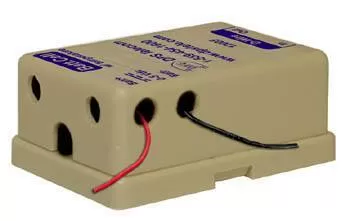Check out our White Paper Series!
A complete library of helpful advice and survival guides for every aspect of system monitoring and control.
1-800-693-0351
Have a specific question? Ask our team of expert engineers and get a specific answer!
Sign up for the next DPS Factory Training!

Whether you're new to our equipment or you've used it for years, DPS factory training is the best way to get more from your monitoring.
Reserve Your Seat TodayRelated Topics:
Battery Management
An integral part of a good battery management system are the actual battery and current sensors. Battery current sensors typically come in two varieties: discrete and analog. There are some key differences you'll need to know if you want to avoid the headaches associated with the wrong current measurement sensor.
First, you'll encounter discrete or dry contact closure sensors. These kinds of sensors latch and release a contact closure, giving it the capability to report "yes" or "no" (or "on" or "off") information. These kinds of sensors are great for monitoring certain conditions - if a door is open, if a motion sensor gets triggered, etc. However, they leave something to be desired when it comes to measuring something continuous (like battery voltage or temperature).

That's where the power of analog sensors comes in. These sensors, instead of featuring a dry contact closure for triggering alarms, measure precise voltage or current flow through its pins. An analog sensor is continuously outputting the current or voltage that reflects the value that's being monitored (electrical current, voltage, or temperature, for example).
With a good battery monitoring device, you'll be able to specify which voltages/currents correspond to which value for what is being monitored (for example: 0v = 0 degrees and 5v = 130 degrees). This allows you to define what will trigger an alarm - not a one-size-fits-all solution out of the box. Customized reference/threshold values give you complete control over your battery management system.
D-Wire Sensor Network
The popular D-Wire sensors allow you to keep tabs on environmental and battery conditions like never before. Each D-Wire sensor node can be daisy chained from a single D-Wire port for an easy and simple setup. The sensors use an RJ11 connection and are plug 'n' play design - so you can spend more time monitoring and less setting up.

D-Wire sensors allow you to monitor critical analog conditions to keep your network online - battery voltage, temperature, and humidity. These sensors are the perfect match with the BVM 48 G2 battery voltage monitoring system.
By combining the daisy-chainable D-Wire sensors with the power of the BVM 48 G2, you'll have the complete solution for monitoring your battery cells and protecting your uptime.